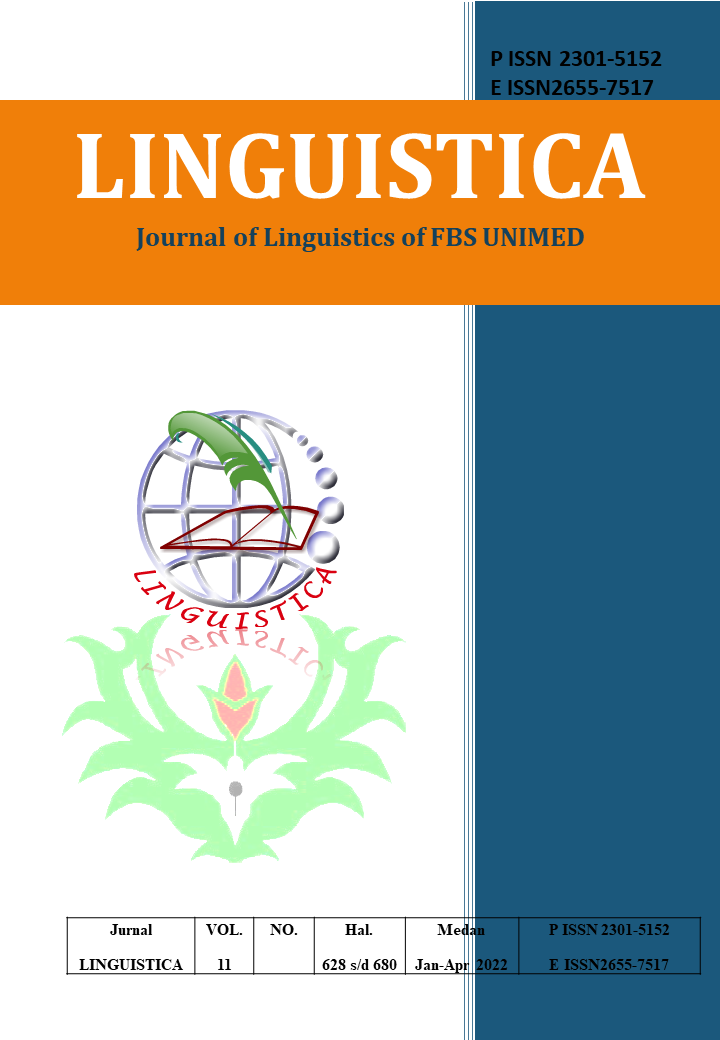SEMIOTIC INTERPRETATION OF COLOR IN JAVANESE TEDAK SITEN CEREMONY TEXT
DOI:
https://doi.org/10.24114/jalu.v11i1.34493Abstract
The purpose of this study was to find the true meaning of color used in Tedak Siten Javanese ceremony text. The study was conducted by using desccriptive method. The data of the study were photos, video and also interview section with the informans. The data analysis were taken by observing, interviewing and listing the data into some classification. The data were analyzed based on the theory that proposed by Charles Saunders Pierce™s Semiotic Triangle and Rolland Barthes. The findings identify that there were seven kinds of color which used in Tedak Siten, they were black, purple, blue, green, red, yellow, and whiter. There are no rules for the colors arrangement. According to both of theories black symbolized equality, purple symbolized wealth, blue symbolized trustworthy, green symbolized lucky, red symbolized love, yellow symbolized happy and white symbolized pure.Downloads
Published
2022-05-13
Issue
Section
Articles
License
Copyright (c) 2022 VANIA DWISARIKA RISKIA, ZAINUDDIN ZA, SYAMSUL BAHRI

This work is licensed under a Creative Commons Attribution-ShareAlike 4.0 International License.
Authors who publish with this journal agree to the following terms:
- Authors retain copyright and grant the journal the right of first publication with the work simultaneously licensed under a Creative Commons Attribution License that allows others to share the work with an acknowledgment of the work's authorship and initial publication in this journal.
- Authors are able to enter into separate, additional contractual arrangements for the non-exclusive distribution of the journal's published version of the work (e.g., post it to an institutional repository or publish it in a book), with an acknowledgment of its initial publication in this journal.
- Authors are permitted and encouraged to post their work online (e.g., in institutional repositories or on their website) prior to and during the submission process, as it can lead to productive exchanges, as well as earlier and greater citation of published work (See The Effect of Open Access).
- This work is licensed under a Creative Commons Attribution-ShareAlike 4.0 International License.

